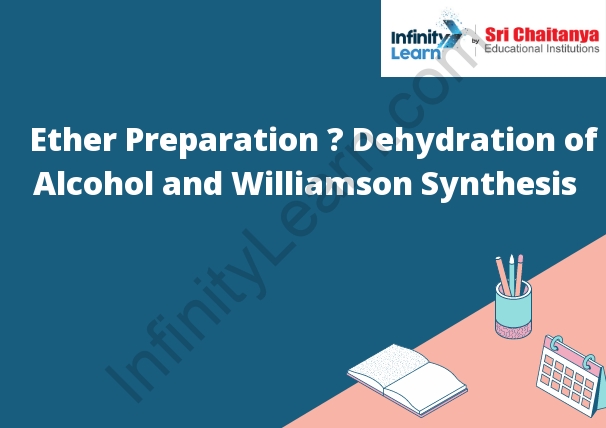Table of Contents
Preparation of Ether with Reactions and Equations
The preparation of ether can be achieved through the reaction of alcohols with an appropriate amount of an acid catalyst. The equations for the reaction are as follows:
ROH + HX → RX + H2O
RX + R’OH → RR’OCH3
In the first equation, alcohols react with acids to form alkyl halides. In the second equation, alkyl halides react with alcohols to form ethers.
The preparation of ether can also be achieved through the reaction of an alkoxide with an appropriate amount of an acid catalyst. The equations for the reaction are as follows:
RO- + HX → RX + H2O
RO- + R’OH → RR’OCH3
In the first equation, alkoxides react with acids to form alkyl halides. In the second equation, alkoxides react with alcohols to form ethers.

Ether is a volatile, flammable, colorless liquid. It is the simplest example of an ether, and is composed of two molecules of ethanol connected by an ether linkage. Ether is commonly used as an anesthetic, and has a characteristic sweet odor.
In order to prepare ether, ethanol and sulfuric acid are mixed in a flask. The sulfuric acid catalyzes the formation of the ether linkage, and the ethanol is distilled off. The ether is then collected in a separatory funnel, and the remaining ethanol is distilled off.
Preparation of ether by dehydration of alcohol
The dehydration of alcohol to form ether can be achieved by using a dehydrating agent, such as concentrated sulfuric acid.
The alcohol is mixed with concentrated sulfuric acid in an Erlenmeyer flask, and the mixture is heated.
The concentrated sulfuric acid acts as a dehydrating agent, and it causes the alcohol to dehydrate and form ether.
Preparation of ether through Williamson Synthesis
The Williamson ether synthesis is a classic organic reaction for the preparation of ethers from alcohols. The reaction involves the nucleophilic addition of an alkoxide ion to an aldehyde or ketone to form an alkoxide ion. The alkoxide ion then undergoes a second nucleophilic addition to the carbonyl group to form the ether. The reaction is shown below.
The Williamson ether synthesis can be used to prepare a wide variety of ethers. The reaction is typically carried out in the presence of a base such as sodium hydroxide or potassium hydroxide to provide the alkoxide ion. The choice of base can be important in determining the reactivity of the alkoxide ion. For example, in the case of aldehydes, the addition of a strong base such as sodium hydroxide leads to the formation of a very stable alkoxide ion, while the addition of a weaker base such as potassium hydroxide leads to the formation of a less stable alkoxide ion. This difference in reactivity can be used to control the course of the reaction.
The Williamson ether synthesis is a two-step process. The first step is the nucleophilic addition of the alkoxide ion to the aldehyde or ketone to form the alkoxide ion. The second step is the nucleophilic addition of the alkoxide ion to the carbonyl group to form the ether. The order of these two steps can be reversed, but



